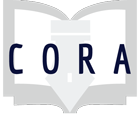What is “fake news” anyway? Are we living in a post-truth world? These University of Michigan course materials will provide opportunities to discuss and analyze news production, consumption and evaluation. Students will develop the critical thinking skills necessary to be an informed citizen; understand how their worldview affects their interpretation of the news; and create a personal strategy for fact-checking and evaluating the news.
Assignments
This is designed to introduce students to the wonderful world of periodicals, in their great variety, and to how they will appear in different databases. It also begins the work of building their skills at evaluating information sources, determining perspective.
This exercise was designed for 1st year writing students with several different goals in mind: • encourage deeper, closer reading; • introduce the concept that information sources have perspective; • develop vocabulary around describing information and perspective; • acquaint students with the many values/uses of subject encyclopedias; • practice topic narrowing using these types of encyclopedia articles.
This session was part of an undergraduate, critical thinking and global perspectives course. The course is offered by various disciplines on campus. This instance focused on global challenges (The Seven Revolutions developed by csis.org). For the session the students applied two frameworks to data: authority is constructed and contextual and scholarship as conversation. Students learned about a data life cycle concept with emphasis on evaluation.
This is a 65-minute workshop designed for 1st year composition students who will be using periodical sources in their research. Students will practice writing contextualizing statements, e.g. describing authors, genres, types of periodicals, for a variety of information sources of the type they will be using in their own research projects.
This concept map and activity explores how various sources of information are created, accessed, and shared. Students collaboratively define what makes a source traditional, emerging, public, or exclusive. Students are given a type of information source to map on the grid according to each axis, and provide a rationale for their placement.
In this assignment students work in groups on closely reading international policy documents, noting substantive changes in a policy area over time, and ploting those changes in the timeline tool, TimelineJS.
In this exercise students use the Voyant word analysis tool to analyze Baldwin’s The Fire Next Time. (Any literary work would work.)
This assignment leads students through an analysis of media coverage of the 1965 Watts uprising. The intention is for students to learn more about the uprising and how a database can be used as a digital humanities tool.
This assignment requires students to apply their knowledge of antisemitic tropes to tweets with the final outcome of the assignment being a short analytical paper and a presentation.
